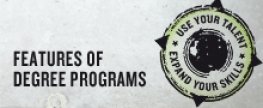
Apply
now
now
Statics and Strength Theory
level of course unit
First cycle, BachelorLearning outcomes of course unit
The students are able to:
• Analyze systems of forces and calculate unknown forces by size and direction.
• To apply the equilibrium conditions in statically determined systems.
• Determine the existing internal forces in members, beams and frames.
• Examine the level of framework and determine the magnitude of the bar forces.
• Investigate friction between machine parts.
• Differentiate between shear and normal stresses and identify vulnerable areas in machine components.
• To apply the basic relationships of strength theory to simple machine parts and to perform cross-sectional dimensioning.
• Make essential statements on strength hypotheses.
• Analyze systems of forces and calculate unknown forces by size and direction.
• To apply the equilibrium conditions in statically determined systems.
• Determine the existing internal forces in members, beams and frames.
• Examine the level of framework and determine the magnitude of the bar forces.
• Investigate friction between machine parts.
• Differentiate between shear and normal stresses and identify vulnerable areas in machine components.
• To apply the basic relationships of strength theory to simple machine parts and to perform cross-sectional dimensioning.
• Make essential statements on strength hypotheses.
prerequisites and co-requisites
not applicable
course contents
• Power systems and balance on the rigid body
• Bearing reactions, focus
• Rod, beam, frame - internal forces
• Level framework
• Adhesion and friction on machine parts
• Stress types: Tension/compression, shear, surface pressure, moment of area and resistance, bending, torsion
• Change of shape
• General information about forces; breakdown, resultant, reduction, moment of a force, distributed forces
• Cutting methods, equilibrium in central and general force groups
• Coulomb friction
• Center of gravity & area torques
• Internal forces on rod and beam
• Stress state, principal stresses, Hooke’s law
• Tensile/compressive stresses, shear stresses, bending stresses, torsion, deformations
• Strength hypotheses, composite loading
• Bearing reactions, focus
• Rod, beam, frame - internal forces
• Level framework
• Adhesion and friction on machine parts
• Stress types: Tension/compression, shear, surface pressure, moment of area and resistance, bending, torsion
• Change of shape
• General information about forces; breakdown, resultant, reduction, moment of a force, distributed forces
• Cutting methods, equilibrium in central and general force groups
• Coulomb friction
• Center of gravity & area torques
• Internal forces on rod and beam
• Stress state, principal stresses, Hooke’s law
• Tensile/compressive stresses, shear stresses, bending stresses, torsion, deformations
• Strength hypotheses, composite loading
recommended or required reading
• Assmann (2009): Technische Mechanik Bd. 1: Statik, 19. Aufl., Oldenbourg Verlag München
• Assmann (2013): Technische Mechanik Bd. 2: Festigkeitslehre, 18. Aufl., Oldenbourg Verlag München
• Böge (2013): Technische Mechanik: Statik – Reibung – Dynamik – Festigkeitslehre - Fluidmechanik, 30. Aufl., Springer Vieweg Verlag Wiesbaden
• Böge (2013): Aufgabensammlung Technische Mechanik, 21. Aufl., Springer Vieweg Verlag Wiesbaden
• Gross (2013): Technische Mechanik 1: Statik, 12. Aufl., Springer Vieweg Verlag Wiesbaden
• Gross (2014): Technische Mechanik 2: Elastostatik, 12. Aufl., Springer Vieweg Verlag Wiesbaden
• Assmann (2013): Technische Mechanik Bd. 2: Festigkeitslehre, 18. Aufl., Oldenbourg Verlag München
• Böge (2013): Technische Mechanik: Statik – Reibung – Dynamik – Festigkeitslehre - Fluidmechanik, 30. Aufl., Springer Vieweg Verlag Wiesbaden
• Böge (2013): Aufgabensammlung Technische Mechanik, 21. Aufl., Springer Vieweg Verlag Wiesbaden
• Gross (2013): Technische Mechanik 1: Statik, 12. Aufl., Springer Vieweg Verlag Wiesbaden
• Gross (2014): Technische Mechanik 2: Elastostatik, 12. Aufl., Springer Vieweg Verlag Wiesbaden
assessment methods and criteria
written exam
language of instruction
Germannumber of ECTS credits allocated
6eLearning quota in percent
20course-hours-per-week (chw)
4planned learning activities and teaching methods
integrated Lecture







